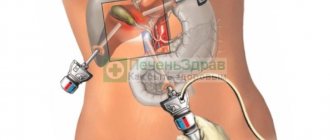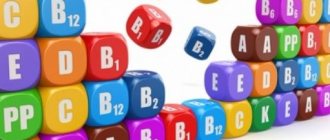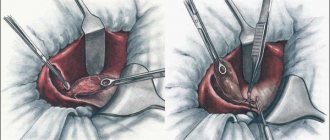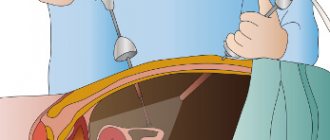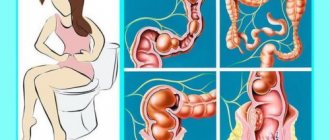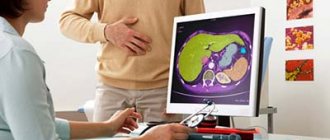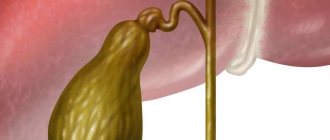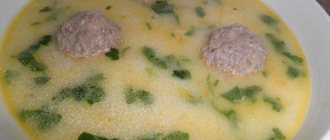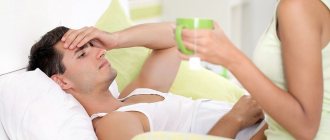The gallbladder is an important digestive organ that is responsible for the accumulation, concentration and periodic release of bile into the intestines. In 24 hours, 2 liters of liver secretion is collected in the gallbladder, which is necessary for the primary processing of fats and stimulation of intestinal motility.
Some gallbladder diseases can only be treated surgically. Cholecystectomy is a surgical procedure in which the gallbladder is removed. This procedure is prescribed for problems with bile excretion. Diarrhea after gallbladder removal is the most common consequence of surgery. To restore the functionality of the digestive system, it is necessary to carry out complex treatment.
The decision to remove the gallbladder is made when the organ ceases to cope with its functions and becomes dangerous to humans.
Cholecystectomy is prescribed in the following cases:
- Acute cholecystitis, which cannot be treated conservatively (with medications).
- Chronic inflammation of the gallbladder, in which the flow of bile into the intestines is disrupted.
- Empyema of the gallbladder (purulent inflammation).
- Gangrene of the gallbladder.
- Gallstone disease (in the presence of large stones).
- Neoplasms on the gallbladder (cysts, polyps, cancer).
- Organ injury.
At first, acute inflammation of the gallbladder is treated with a conservative method, but medications are not always effective. If the functionality of the biliary system (GB and bile ducts) is impaired, doctors prescribe cholecystectomy. Purulent inflammatory processes, gangrene, and tumors are also treated surgically.
For cholelithiasis (cholelithiasis), the doctor draws up a treatment regimen taking into account the patient’s condition. First, the stones are crushed using a laser. GB removal is resorted to only if the stones cannot be removed in any other way.
Cholecystectomy is performed in two ways: minimally invasive and by opening the abdominal space. In laparoscopy, gallbladder removal is performed using a laparoscope and other instruments that are inserted through small holes in the skin. This procedure is safer and less traumatic. With an open operation, the likelihood of a postoperative hernia increases (especially in elderly patients).
The patient's condition and rules of conduct after surgery
Patients who are candidates for cholecystectomy are puzzled by the question of what happens after the operation and how the biliary system functions in the absence of the gallbladder. To understand what the quality of life will be like after surgery, you need to understand how fats are digested without a gallbladder.
When the gallbladder is removed, the common bile duct remains, through which liver secretions enter the intestines. Now bile does not accumulate and concentrate, but immediately enters the duodenum in small doses, participating in the breakdown of food. Since the concentration of bile has decreased, it will not have such a strong effect on fats. Therefore, in order to avoid digestive disorders, the patient after removal of the gallbladder must follow the following rules:
- Eat food often, but in small portions, so that bile completely processes its components.
- The interval between meals should not be long, since constantly incoming liver secretions will negatively affect the digestive organs.
- You should limit the amount of fatty foods in your diet, since the concentration of bile is no longer so strong and it will not be able to process large amounts of fat.
- It is recommended to avoid foods that activate intestinal motility.
If these rules are violated, the likelihood of stool disorders (diarrhea) increases.
As a result, patients have questions about this. Why does loose stool occur after cholecystectomy? This is exactly what will be discussed further.
Traditional methods of treating diarrhea and diarrhea
Traditional methods of treating symptoms of diarrhea and diarrhea have long been used. For this purpose, decoctions of oak bark, wormwood, cherry, and St. John's wort were used. Bird cherry fruits, blueberries, apples, cones, and nuts were also used. These methods are used only as symptomatic treatments before seeing a doctor. After diagnosis and consultation with a doctor, you should at least temporarily abandon traditional methods of treatment and adhere to the prescribed treatment, following all prescribed recommendations. This is the only way you can overcome the complications that arise after cholecystectomy.
Diarrhea after cholecystectomy
Normally, substances enter the intestines along with the juices of the digestive glands that stimulate the functionality of this organ and also accelerate the movement of food bolus. One such stimulant is bile. In the presence of a gallbladder, it is periodically released during its contraction after the receipt of a portion of food.
After cholecystectomy, liver secretions constantly enter the duodenum. This is the main cause of diarrhea after gallbladder removal.
The advantage is that after surgery the concentration of bile decreases, so it does not stimulate intestinal motility as much. In addition, the following factors influence digestion after removal of the gallbladder: the functionality of the intestines, the autonomic nervous system, the quality of foods, and nutritional rules. According to doctors, loose stools after removal of the gallbladder are a physiological phenomenon that can be eliminated.
Other causes of loose stools after cholecystectomy are cholelithiasis or biliary tract diseases.
Symptoms of chologenic diarrhea:
- The color of the stool is pale yellow or greenish. This occurs due to a violation of the outflow of liver secretions, which now flow in excess. The intestines are not able to cope with such a volume of bile, as a result, the secretion dilutes its contents.
- There is heaviness and dull pain on the right under the ribs.
- Discomfort appears when feeling the seam.
- Greenish clots may be observed in the feces.
- The stool has a strong, unpleasant odor.
In addition to the symptoms described above, gas formation in the intestines increases, the abdomen swells, and blood clots are observed in the stool. Some patients experience persistent diarrhea after cholecystectomy. This is possible if the patient does not follow nutritional rules.
Then patients who have undergone surgery to remove the gallbladder are faced with the question of what to do to avoid chronic diarrhea.
After surgery, the patient remains in the hospital for several days under the supervision of a doctor. He follows a strict diet and, if necessary, takes medications that slow down intestinal motility. To restore the body, it is recommended to take vitamin and mineral complexes.
What to do if you have diarrhea
If diarrhea does occur to you after surgery, you need to take immediate action. It does not matter what caused the cholecystectomy. If you do not treat PCES, which causes diarrhea, you can get more serious complications, including an attack of acute pancreatitis. Therapy for stool disorder after removal of the gallbladder is based on 3 pillars: taking the necessary medications (as recommended by a doctor), proper nutrition, a healthy lifestyle (exclude smoking and drinking alcohol) And the right psychological attitude is also very important.
Detoxifying drugs
Drug treatment tactics depend on the severity of diarrhea. If loose stools occur every day for 2-3 days, we can talk about dehydration. Sometimes it doesn't show up right away, but there are major changes happening inside our bodies. With diarrhea, not only fluid is lost, but also potassium, vitamins, and beneficial microelements. Special solutions, for example, Regidron, help replenish the balance.
Detoxifying drugs will help cleanse the intestines:
What enzymes can you take?
At first, you need to help the gastrointestinal tract digest food. For this, there are special preparations containing enzymes: Creon, Panzinorm, Microzim, etc. People with problematic pancreas should definitely take them.
Note! Some patients get hooked on enzymes, because with them it’s easier not to follow a diet or limit yourself. Fermented medications should only be taken when necessary. Constant use leads to “lazy” pancreas syndrome, when the organ refuses to digest food without enzymes and work independently.
Choleretic drugs
If diarrhea is associated with improper outflow of bile, a violation of its production, doctors prescribe taking choleretic drugs - Cholesal, Lyobil. Gastroenterologists advise taking a course of Ursofalk or Ursosan for the first time after surgery. The drugs normalize the flow of bile, improve its quality, and allow the gastrointestinal tract to quickly adapt to new conditions.
Antispasmodics for pain
If there is pain in addition to diarrhea, use antispasmodics (Buscopan, Duspatalin, No-shpa). It is advisable to drink them half an hour before meals. They normalize the flow of bile, the function of the ducts, and the sphincter of Oddi. Treatment can include vitamin complexes containing omega-3, vitamins C, B, magnesium, and potassium.
Drug treatment
As a rule, diarrhea and other unpleasant symptoms appear when a patient who has had their gallbladder removed returns home. This happens because the patient violates nutritional rules.
According to medical statistics, overweight people more often need surgery. They get tired of the monotonous menu and return to their previous diet, believing that the danger is now behind them. However, this opinion is erroneous. After a few days, the patient develops diarrhea, loses weight and fluid, and his condition worsens.
Patients who experience cholagenic diarrhea often have questions about how to treat it. Therapy consists of taking the following medications:
- Enterosorbents are a group of medicines that cleanse the body of harmful substances and normalize the functionality of the intestines. For this purpose, the following medications are used: Smecta, activated or white carbon, Lactofiltrum, Filtrum.
- Antibacterial agents are prescribed when pathogens are detected in the intestines or the presence of an inflammatory process.
- Preparations containing lactobacilli, probiotics, prebiotics (nutrient medium for beneficial microorganisms). To eliminate diarrhea and restore normal microflora, use Normabakt, Linex, Bifiform.
- Medicines containing bile acids and bile are used for additional therapy (Cholenzim, Lyobil, Allochol).
To speed up the production of their own enzymes, Hepatosan, Cyclovalon, Ursosan, Enterosan are used. To slow down intestinal motility, Loperamide is prescribed.
Due to the loss of large amounts of water and salts due to diarrhea, it is recommended to take Regidron for 2 to 3 days. The glucose-salt preparation retains fluid in the body.
Treatment
Drug treatment
Description: the pharmacological agent Enterol is an antidiarrheal agent that regulates intestinal microflora. The drug contains microorganisms that have a biological protective effect against normal microflora. Enterol returns the microflora to normal and stops diarrhea.
- installation of a central venous catheter,
- allergic reactions.
The price varies from 230 to 300 rubles depending on the pharmacy chain.
Description: Hilak forte regulates the balance of the intestinal bacterial flora and brings its composition back to normal. Due to the presence of metabolites of normal bacterial flora in the drug, the drug restores intestinal function.
- allergic reactions,
- Use during pregnancy and lactation only as prescribed by a specialist.
The price varies from 400 to 500 rubles.
Description: is a remedy against diarrhea. Understands the motor activity of intestinal myocytes, reduces the rate of passage of feces. It is characterized by a rapid onset of effect and duration of action.
- allergic reactions,
- lactose intolerance,
- intestinal diverticula,
- acute intestinal obstruction,
- nonspecific ulcerative colitis in relapse,
- period of pregnancy, lactation.
The price varies from 100 to 200 rubles.
Description: is a remedy against diarrhea. Understands the motor activity of intestinal myocytes, reduces the rate of passage of feces. It is characterized by a rapid onset of effect and duration of action.
- allergic reactions,
- lactose intolerance,
- intestinal diverticula,
- acute intestinal obstruction,
- nonspecific ulcerative colitis in relapse,
- period of pregnancy, lactation.
The price varies from 300 to 400 rubles.
Description: is a remedy against diarrhea. Understands the motor activity of intestinal myocytes, reduces the rate of passage of feces. It is characterized by a rapid onset of effect and duration of action.
- allergic reactions,
- lactose intolerance,
- intestinal diverticula,
- acute intestinal obstruction,
- nonspecific ulcerative colitis in relapse,
- period of pregnancy, lactation.
Nutrition rules
As mentioned earlier, to avoid diarrhea after gallbladder removal, the patient must follow a diet. It is important to monitor your diet throughout your life. It is prohibited to return to your usual diet even several years after the gallbladder has been removed. Violating the diet rules can lead to chronic diarrhea and dehydration.
The patient's menu after cholecystectomy changes dramatically. The main goal of the diet is to prevent cholelithiasis and other pathologies of the biliary tract.
The patient should eat frequently (4–7 times), but in small portions. This is necessary so that liver secretions do not accumulate in the ducts. In the absence of food, bile will irritate the intestinal mucosa.
The patient must follow a strict diet for 4 months after surgery:
- The diet needs to be replenished with boiled, steamed or pureed food. Sometimes food can be stewed. Fried foods are strictly contraindicated. You should reduce the amount of foods rich in fats and fiber.
- Food based on vegetable broth relieves the digestive organs. You can add cereal to soup with vegetables.
- It is allowed to eat lean meat (veal, chicken, beef, rabbit). Sea fish can be eaten up to 2 times in 7 days, as it helps to absorb fat.
- To speed up the removal of liver secretions, vegetable oils and fats found in milk are included in the diet.
- In the morning and evening, it is recommended to consume fermented milk products with a low fat content, as well as soft-boiled eggs. Food can be seasoned with butter or vegetable oil (minimum amount).
- To speed up the recovery of the body, you need to eat porridge.
- The diet is supplemented with vegetables (not sour varieties).
- Watermelons and melons are useful after cholecystectomy, as they have a diuretic effect and cleanse the body of toxic substances.
- You can use honey instead of sugar.
To prevent chologenic diarrhea, it is recommended to supplement the menu with foods containing a large amount of dietary fiber (brown rice and bran bread).
If you are dehydrated after diarrhea, you should drink plenty of fluids. A healthy patient should drink 1.5 - 2 liters per day, and after removal of the gallbladder, the norm is about 3 liters of liquid. In addition to still water, you can drink fruit drinks, compote, freshly squeezed juice from vegetables or fruits. It is recommended to drink 220 ml of mineral water (Borjomi, Essentuki) in the morning on an empty stomach.
For breakfast you can eat porridge with water, a small piece of bread with butter, a boiled egg or a steamed egg white omelet.
If diarrhea occurs from time to time, then exclude milk and milk products from the menu. The patient can enjoy homemade jam, biscuits, and crackers.
To avoid cholelithiasis and other diseases of the biliary tract, the patient should familiarize himself with the list of prohibited products:
- After cholecystectomy, meat and fatty fish are contraindicated. This applies to fried and fatty foods. After removal of the gallbladder, enzymes are not produced, so the digestive organs negatively perceive substances obtained during frying.
- Spicy foods irritate the intestinal mucosa, causing diarrhea. Therefore, exclude spices, onions and garlic from the menu.
- Chocolate, products with rich cream, and sweets are also included in the list of prohibited items.
- Dishes containing legumes cause excess gas and bloating. For normal absorption of such products, many enzymes are needed.
- Refractory fats should be avoided.
- Alcohol is strictly contraindicated, as it provokes general poisoning of the body and impairs the functionality of the liver.
In addition, a patient after cholecystectomy is not recommended to drink a lot of tea and coffee.
How to eat healthy
If you have diarrhea, be sure not to eat for the first day, but drink plenty of fluids. Black and green tea, rosehip, chamomile, and rice infusion are suitable. On the second day, permitted foods should be included in the menu. After removal of the gallbladder, you need to pay special attention to your diet so as not to aggravate the condition of the gastrointestinal tract.
Important! All products are prepared only by steaming and boiling. Completely fried, smoked, and pickled foods are excluded. You should not bake food for the first week after diarrhea. In the future, it is better to use foil or special paper or film for this purpose.
Allowed products on the second day include:
- rice water, rice porridge;
- oatmeal;
- buckwheat porridge;
- boiled carrots, potatoes;
- boiled chicken fillet, in the form of puree;
- rabbit, turkey, steamed duck meat;
- low-fat steamed or boiled fish;
- steamed egg white omelette.
A week after the signs of illness disappear, you need to switch to diet No. 5, which is supposed to be followed by people who have undergone surgery to remove the gallbladder. It is useful to drink jelly from berries, compotes from dried fruits, chamomile infusion for prevention, rose hips, black tea.
Remember, if after cholecystectomy you experience diarrhea (even occasionally), you need to strictly follow diet No. 5 for at least a year to help the body and the gastrointestinal tract switch to a new “mode” of operation. Don't think that the problem will stay with you forever. The year will fly by quickly, but after recovery you will be able to occasionally indulge yourself in moderation with sweets, smoked foods, and other foods that are on the list of prohibited foods, without any health consequences.
For more information about nutrition after gallbladder removal at different stages of surgery, read the article Diet and nutrition after gallbladder removal
You can find a large number of recipes about nutrition after removal of the gallbladder in the book that I wrote together with my doctor. There are also recipes for dishes so that the diet is varied in order to eliminate diarrhea and other unpleasant phenomena. You can read about the book here.
We invite you to watch the video “What can you eat if you have diarrhea - diet tips.”
If diarrhea occurs after gallbladder removal, what should you do? Patients who have undergone cholecystectomy often face this question. After surgical treatment of cholelithiasis, a radical restructuring occurs in the functions of the digestive organs, since bile can no longer enter the intestinal tract in the same volume and digest food. When consuming foods that doctors do not recommend after such a procedure, diarrhea occurs.
Physical activity after gallbladder removal
The patient cannot avoid diarrhea after removal of the gallbladder if he performs heavy physical work after discharge. During the postoperative period, rest should be maintained. It is better to avoid household chores for now, as they provoke contraction of the abdominal muscles, as a result of which intestinal motility increases and loose stools occur.
When the gallbladder is removed, it is prohibited to lift weights exceeding 3 kg. Such activity causes an increase in pressure in the abdominal space.
However, being completely passive is also not recommended. Walking for a total duration of about 40 minutes has an excellent effect on the body. After some time, the doctor will allow you to perform special gymnastic exercises. It is better to avoid jumping, running, and abdominal exercises.
The patient can return to his usual daily routine 6 to 12 months after cholecystectomy. In any case, the decision to change lifestyle is made by the doctor, taking into account the characteristics of the patient’s body.
Thus, diarrhea after removal of the gallbladder is a common phenomenon that does not bypass any patient. To restore the functionality of the digestive organs, you should follow a diet, avoid physical activity and take medications prescribed by your doctor. Only by following these rules will the patient be able to improve digestion and also avoid chologenic diarrhea.
After removal of the gallbladder, 50% of patients develop unpleasant symptoms. Every fifth person suffers from loose stools. Accelerated passage of food through the intestinal tract is a complication of surgery or a pathology that was not diagnosed before cholecystectomy. Stool returns within 1-2 weeks, but diarrhea can persist for years.
Patient prognosis
The problem of diarrhea after gallbladder removal is common and unpleasant. Complaints may recur years after surgery. Scheduled consultations with a therapist and gastroenterologist are needed for timely correction of treatment. In an adult patient, self-control is important. Changing your lifestyle and diet is the key to successful treatment.
Many people are hesitant to have surgery to remove the gallbladder (cholecystectomy). There is no unnecessary organ in the body; each performs its only and unique function. We are afraid that without a gallbladder, the gastrointestinal tract will begin to experience serious difficulties. Numerous complications are frightening, including diarrhea.
In fact, diarrhea (or, as the common people say, diarrhea) after removal of the gallbladder is not a death sentence. If you have undergone cholecystectomy, the main thing is to follow your doctor's recommendations. Then PCES (postcholecystectomy syndrome), which results in bowel dysfunction, will go away in a mild form or will bypass you altogether.
Reasons for gallbladder removal
The gallbladder is an organ in which minerals and fluid are absorbed from bile. As a rule, inflammation occurs due to a violation of the outflow of bile. In 94-96% of patients hospitalized in the surgical department, cholelithiasis is detected. Treatment begins with medications. If there is no effect, surgery is performed to remove the gallbladder (cholecystectomy). Main reasons:
- Cholelithiasis.
- Acute or chronic inflammation of the gallbladder.
- Neoplasms.
- Traumatic injury.
- Purulent organ damage.
The gallbladder can be removed laparoscopically or openly. In the first case, instruments are introduced into the abdominal cavity through micro incisions. The operation is minimally invasive, reducing the number of complications and days of hospital treatment. Recovery takes less time. The scars are practically invisible. The cosmetic effect is especially important, since the pathology most often occurs in women. In many clinics around the world, 95-97% of patients are operated on laparoscopically.
An open operation to remove the gallbladder with an incision along the anterior abdominal wall is performed when diseases that were not recognized before cholecystectomy are detected (malignant or benign tumors in the gallbladder, stomach or colon) or complications (massive bleeding that cannot be stopped laparoscopically, damage to extrahepatic gallbladders). ducts).
Reasons for the operation
With the small size of the gallbladder, one can underestimate its role in the digestive system as long as it functions normally. However, with disruption of the activity of the hollow organ, the development of numerous pathologies occurs, which in terms of prevalence can be compared with liver diseases.
More recently, radical excision of the gallbladder was considered an excellent way to get rid of numerous problems arising from its pathological activity. Acute cholecystitis, for which removal was vital, was in first place among all abdominal operations, ahead of even appendectomy.
The basic principles of surgical treatment of diseases of the natural reservoir for storing bile produced by the liver remain unchanged:
- Attacks of acute cholecystitis occur against the background of inflammation of the bladder filled with stones. The appearance of stones is a natural consequence of disturbances in the qualitative composition of bile, an excess of certain components in it, sticking together into formations called stones or calculi. Their migration leads to blockage of the ducts, the development of unbearable pain, and a sharp deterioration in the quality of life.
- Radical measures, or cholecystectomy, can be carried out in case of emergency, on which the preservation of the patient’s life often depends, on a planned basis or urgently, when delay is no longer possible.
- The human body cannot continue to function without the liver, however, gallbladder removal, if successful, implies a long life. If certain conditions are strictly observed to ensure the normal passage of important processes, the patient continues to exist with some restrictions.
All this happens only after attempts to stop the development of pathology with the help of diet and drug therapy. If long-term treatment with conservative methods does not produce tangible results, it is necessary to resort to surgical intervention to avoid the likelihood of a more negative scenario starting. Often traditional measures do not give the expected effect due to the scale of disorders in the body: they make it impossible to prevent the formation of new stones.
Recovery after surgery
The postoperative period often passes without complications, but half of the patients develop digestive system disorders. Their entire set, including hologenic diarrhea, is combined into the concept of postcholecystectomy syndrome (PCES). The distinguished variants of PCES are:
- Dyspeptic (a feeling of bitterness in the mouth, especially on an empty stomach, nausea, diarrhea or constipation).
- Painful (constant pain in the right hypochondrium of varying intensity).
- Jaundice (periodic jaundice of the skin and sclera, combined with or without pain in the right hypochondrium).
- Clinically asymptomatic (the patient has no complaints, but according to ultrasound and biochemical blood tests, pathological changes are determined).
Diarrhea after cholecystectomy
Hologenic diarrhea is diarrhea three or more times a day after cholecystectomy. Chronic bowel dysfunction lasts more than four weeks. In most patients, bowel movements return to normal, but this takes time. An unpleasant symptom slows down the return to the original level of activity.
Frequent loose stools are an uncomfortable condition, but not dangerous to health. With massive fluid loss, dehydration and electrolyte imbalance may occur. If “symptoms of anxiety” appear, you need to consult a surgeon and therapist:
- Blood in the stool.
- Fever.
- Abdominal pain.
- Weight loss.
- Constant thirst.
- Cramps of the calf muscles.
- Diarrhea for more than four weeks.
Several episodes of diarrhea after surgery do not require additional tests or examinations. If other symptoms appear, diagnosis is carried out according to indications.
ethnoscience
Traditional therapy is aimed primarily at eliminating diarrhea, regardless of its origin. In complex treatment, in addition to medications, you can use recipes accumulated by many years of experience of our ancestors. We will consider with you only those that can be used without harm to the body that has undergone surgery to remove the gallbladder.
Oak bark
The plant has a unique astringent, antimicrobial and fixing effect due to tannins. It has been proven that after taking the infusion, the intestines are enveloped in a protective “film”, which prevents irritation and restores the organ. Prepare a decoction at the rate of 1:2 (1 tablespoon of bark per 2 cups of boiling water). Leave for about an hour, take 40 ml. 3 times a day, before meals.
Sage
The plant has antimicrobial and fixative properties. It should be used as an infusion after meals, 3 times a day. To get a healing decoction, brew 50 g of herb in half a liter of boiling water and leave for an hour. Take half a glass chilled at intervals of at least 2 hours.
Congee
Rice decoction is popular for diarrhea. The product can be used by children, adults, and pregnant women. To obtain it, cook rice over low heat. You need to add 2 times more water than usual so that it is not all absorbed into the cereal during cooking. When ready, strain the broth. Take 3 tbsp. spoons after each meal.
Chamomile
Chamomile decoction has excellent properties. It is used for numerous gastrointestinal diseases, including diarrhea. The unique properties of the plant include: anti-inflammatory, antispasmodic, disinfectant, choleretic effect. Chamomile is suitable for comprehensive restoration of the digestive system after cholecystectomy.
Brew 2 tbsp. spoons of the plant in a liter of boiling water, leave the decoction for an hour. Then take 200 ml, 4-5 times a day, after meals. You can take chamomile not only during the active stage of diarrhea, but also after it to restore the functioning of the gastrointestinal tract. The standard course of treatment is a week. You can read more in the article Chamomile tea - a healing drink for our health.
Treatment of hologenic diarrhea
The main goals of therapy are to restore the normal biochemical composition of bile, the function of the biliary tract and minimize the continuous effect of bile acids on the small intestine. In most cases, following the recommended regimen and diet leads to recovery. The need to prescribe medications is determined by the doctor in each specific case.
Postoperative regimen
After laparoscopic surgery, on the first or second day you are allowed to walk for 30-40 minutes daily, do breathing exercises and exercise therapy. Lifting weights more than 5 kg in the first 7-10 days is contraindicated. After 4-6 months, the range of physical activity expands, running and working out the abdominal muscles are added. The recovery time is determined by the presence or absence of complications, the initial level of physical fitness, and concomitant pathology.
Features of nutrition with a removed gallbladder
To prevent bile from accumulating in the ducts, food should be eaten frequently and in small portions. The optimal number of meals is 5-7 per day. The volume of the main portion is 200-250 ml. Be sure to have 2-4 snacks. Fats are limited to 60-70g per day.
For hologenic diarrhea in the early postoperative period, American therapists recommend the “BRATTY” diet. It includes bananas, rice, apples (preferably baked), weak tea, dry day-old bread and biscuits, and natural yogurt. It is important to drink enough fluids to prevent the opposite problem - constipation.
Following a number of recommendations will help improve the quality of life after surgery:
- Reduce the amount of fatty and fried foods. Steam, stew or boil food. There is no need to completely eliminate fats from your diet. In one meal, 3 grams of fat are digested. Larger amounts cause dysmotility and bloating.
- Increase fiber intake over 2-4 weeks. Include cereal porridges, whole grain flour products in your diet, add butter and vegetable oil. A sharp increase in fiber leads to gas formation.
- For protein products, low-fat fish (hake, pollock) and lean meat (chicken, quail, rabbit, beef) 1-2 times a week are recommended. Reduced-fat dairy products (cottage cheese, kefir, yogurt) are offered for snacks and dinner.
- The diet should include vegetables, fresh stewed and baked. Fermented and pickled foods are not recommended to prevent bloating.
- Coffee worsens the symptoms of diarrhea, so it is better to avoid it. Replace sweets with non-sour fruits and honey.
Drug correction of diarrhea
Diarrhea syndrome should be treated depending on the severity and accompanying complaints. To prevent electrolyte disturbances in the acute period, rehydration solutions are prescribed (Regidron, Ionica, Bio Gaia ORS). Probiotics (Enterozermina, Enterol, Linex) help normalize the intestinal microflora. To treat painful spasms, antispasmodics (Mebeverine hydrochloride) and choleretic drugs are prescribed. Herbal preparations containing silymarin (Gepabene, Essentiale, Karsil, Darsil) normalize liver function.
If signs of inflammation are detected, antibiotics are required (Erythromycin, Clarithromycin, Ciprofloxacin). To weaken motor skills, loperamide (Imodium, Lopedium) is used. Enzyme deficiency can cause diarrhea, flatulence, and heaviness in the stomach. Creon (Pangrol, Panzinorm, Ermital) helps replenish enzyme deficiency and facilitate the digestion of food. With diarrhea, the absorption of nutrients is limited, so vitamin and mineral complexes containing omega 3 fatty acids, magnesium, and vitamins B and C are prescribed.
Without lifelong adherence to a diet and regimen, drug therapy is ineffective.
Irritation from diarrhea
Hologenic diarrhea causes damage to the skin of the anus from bile and irritating acids. A few rules will help alleviate the painful condition.
- After bowel movements, do not rub, but soak. Use baby wipes instead of toilet paper.
- Apply a thin layer of baby protective cream against diaper dermatitis to the anus. The barrier will protect irritated skin from the action of bile acids.
- Avoid hot spices and herbs. Stimulating bile secretion will lead to more irritation.
- Keep a food diary. This way you can mark dishes that provoke an unpleasant symptom.
Causes of diarrhea after gallbladder removal
A normally functioning gallbladder holds bile coming from the liver. Gradually, bile reaches the desired state and is released in small quantities only when food enters the gastrointestinal tract. Once the gallbladder is removed, bile production does not stop. Liver secretions may be released in the same volume as before surgery. But the secretion enters the digestive system not periodically, as before, but constantly.
Therefore, after the gallbladder is removed, the patient has loose stools. Impaired defecation is considered a variant of the norm: liver secretions actively affect the contents of the intestine, causing excessive dilution of stool. Diarrhea is also possible when the gallbladder is removed due to insufficient concentration of bile, since due to a lack of enzymes, the neutralization of hydrochloric acid secreted by the stomach worsens.
Removal of the gallbladder is carried out when there is a violation of the outflow of bile, which is provoked by the following ailments:
- Blockage of the bile ducts due to gallstones.
- The appearance of adhesions in the ducts.
- Mechanical damage to the gallbladder due to injuries, bruises, blows.
- Cancerous tumor.
- Purulent inflammation of the gallbladder.
- The growth of polyps in the cavity of the gallbladder.
Diarrhea after cholecystectomy occurs frequently, in almost all patients. Stool liquefaction does not indicate a deviation from the norm. Rather, diarrhea indicates that after surgery the body has not yet adapted to the new operating conditions - without a removed organ.
How to avoid diarrhea, diarrhea and other complications
Adjust your diet. In the first 4-6 months after removal of the gallbladder, steam or boil foods, then grind them with a blender into a paste-like consistency. All food should be neutral in taste. To avoid complications, completely avoid spicy, fried, and fatty foods. Refrain from salty, bitter foods, and alcoholic drinks. Try to minimize consumption of vegetables, which have a laxative effect on the digestive system. Grain porridges, slime soups, jelly, meat and fish purees from lean meats are suitable for you. During this time, your digestive system adapts to new conditions.
After six months, the diet is expanded. Add vegetables and fruits. Meat and fish can be served in pieces. Dishes are still steamed or boiled.
Only after 1 year can you switch to diet No. 5. It involves a lifelong exclusion of fatty, spicy and other irritating foods and alcohol.
Important! A special feature of meals after gallbladder removal is slow chewing. The longer you chew pieces of food, the more digestive enzymes in the stomach and intestines are activated. This means that absorption will be easier and faster, and complications will not arise.
Refrain from overeating and infrequent meals. After removal of the gallbladder, meals should be five or six times a day, in small portions.
Take enzyme medications to avoid complications. Everything is simple here: the activity of one’s own enzymes for digestion is not enough; outside help is needed. Enzyme replacement therapy is indicated for all patients who have undergone gallbladder removal.
The following drugs are indicated for use:
They contain a complex of digestive enzymes. The dosage is selected individually by the attending physician, depending on the degree of enzyme deficiency.
Enzyme preparations are combined with bile acid preparations:
After removal of the gallbladder, not enough bile acids are released for one meal; these drugs effectively replace the functions of the gallbladder.
The course of treatment is long, in some cases replacement therapy is carried out for life.
Protect your liver. After removal of the gallbladder, the liver is more exposed than ever to aggressive agents. Diet helps maintain its normal function. You can conduct a course of treatment with hepatoprotectors. Essentiale, Ursosan are drugs that have proven themselves in the pharmaceutical market and are widely used today.
Take probiotics to avoid diarrhea and diarrhea. These are preparations containing live bifidobacteria. Regular intake of probiotics restores normal intestinal microflora, normalizing stool formation and gas formation. The patient's flatulence goes away, stool normalizes, and symptoms of diarrhea and diarrhea disappear. Now doctors prescribe:
Taking prebiotics will also be useful. These are drugs that create a “platform” for the colonization of the intestines with normal microflora. As a rule, they are taken in a course before probiotics.
Features of diarrhea after cholecystectomy
Liver secretions after cholecystectomy in small doses constantly enter the duodenum. The liver can produce from one to two liters of bile per day. Therefore, the development of diarrhea after removal of the gallbladder is quite natural.
The following symptoms are characteristic of chologenic diarrhea:
- Gas formation increases.
- The urge to defecate occurs 4-6 times a day.
- Blood clots and green mucous patches can be seen in the feces.
- The consistency of the stool is viscous, mushy.
- From time to time, a dull aching pain appears under the ribs.
- The feces have a pungent odor.
Important! Prolonged diarrhea after cholecystectomy cannot be ignored. Insufficient bile production can lead to peptic ulcers and inflammatory diseases of the gastrointestinal tract. Therefore, if unpleasant symptoms persist for a long time (more than 10 days), you should consult a doctor.
How long do bowel problems last?
It may take three to five days for digestion to stabilize and normal bowel movements to return. The frequency of trips to the toilet is gradually reduced, the stool becomes less diluted, and traces of blood disappear. If loose stools after cholecystectomy continue for more than a week, this indicates a deviation from the norm, and the patient should consult a doctor.
Diarrhea persists for a long time in the presence of such provoking factors:
- Consumption of foods that provoke increased production of hydrochloric acid.
- Failure to follow a gentle diet, consumption of spices and spicy foods.
- Lifting weights.
- Performing active physical exercises.
- Alcohol consumption.
- Smoking.
It is often especially difficult to restore normal digestion in elderly patients, since regeneration processes slow down with age, and the body’s adaptation to new conditions for digesting food also worsens.
Some patients suffer from diarrhea for many years, postponing a visit to the doctor for various reasons. Although a specialist can recommend effective drugs that quickly stabilize intestinal function. Taking into account individual characteristics, the doctor draws up a treatment regimen and helps you choose a diet. If therapy does not give a positive result, a thorough examination of the patient is carried out using MRI, CT, ultrasound, colonoscopy to exclude other diseases.
How to avoid diarrhea after gallbladder removal
Prolonged diarrhea leads to the loss of a significant amount of fluid, along with which vitamins, salts, and minerals are washed out. For a quick recovery, the patient needs to completely review his diet and adhere to a gentle diet. Antidiarrheal medications may also be necessary, but the doctor will decide whether to prescribe them.
Diet features
By eating right, you can significantly reduce the duration of diarrhea when your gallbladder is removed. At first, the patient must follow a strict diet, refusing fatty and heavy foods.
Patients can eat:
- Kefir, low-fat yogurt, low-fat cottage cheese.
- Porridge with water (oatmeal, buckwheat).
- Bananas, baked apples.
- Vegetable soups.
- Lean meat: veal, chicken breast.
Later, you can consume other products that are introduced gradually, focusing on the body’s reaction. The power mode is separately regulated. You need to take food in small portions, their volume should not exceed 200 grams. There is a short interval between meals - about 2-3 hours, no more. Preference is given to steamed dishes, but boiled foods can also be eaten.
Violation of the diet will lead to exacerbation of diarrhea, so exclude the following dishes from your diet:
- Spicy, peppery foods.
- Sweet sodas
- Chocolate, sweets, pastries.
- Fatty meat, fish.
- Raw vegetables, fruits.
- Marinated, fried, smoked foods.
Important! It is strictly forbidden to drink alcohol-containing drinks. Alcohol negatively affects the digestive tract, liver, and even in small quantities can cause poisoning.
Taking medications
Sometimes it is enough for patients after cholecystectomy to follow a diet to restore normal digestion. But there are situations when postoperative diarrhea requires mandatory treatment. Especially if diarrhea is caused by poor diet.
When treating diarrhea that occurs after cholecystectomy, patients should:
- Take detoxifying agents that cleanse the body of toxins, germs, and viruses. Suitable for treatment with Smecta, Polysorb, Enterosgel.
- Drink more fluids to maintain electrolyte balance.
- Be sure to take multivitamin complexes.
- If bile production is impaired after removal of the gallbladder, drink Alohol, Liobil.
Patients are also recommended to use probiotics and prebiotics to stabilize the digestion process: Hilak Forte, Creon, Baktistatin, Bifiform, Linex.
Diet
Removing an organ is always a complex operation that requires special nutrition during the recovery period. Diet is the key to speedy restoration of digestion.
Authorized products:
- dietary meat: chicken, turkey, rabbit;
- dairy products;
- low-fat fish;
- cereals;
- vegetables.
Food is steamed. Fried, smoked and salty foods are excluded.
Prohibited products:
- vegetable oil;
- bakery;
- fruits;
- garlic;
- alcoholic drinks.
It is recommended to eat food in small portions, no more than 200 grams. The diet will help reduce the load on the stomach and improve the production of bile.
Sample menu for the day:
- Breakfast: omelet, tea.
- Snack: vegetable salad.
- Lunch: chicken broth soup, boiled potato and herb salad.
- Afternoon snack: vinaigrette.
- Dinner: vegetable soup, compote.
Meals should be small, at least 5-6 times a day. When stool normalizes, new foods are introduced into the diet gradually.
Features of physical activity after cholecystectomy
Loose stools after removal of the gallbladder increase with physical activity. Therefore, in the postoperative days you should avoid active physical exercise. To prevent diarrhea from appearing again after cholecystectomy, the patient should not lift heavy objects (objects weighing more than 3 kg) for a month. It is also not recommended to perform exercises that provoke tension in the abdominal wall.
Patients can walk. Walking is allowed for 30-60 minutes. Usually, after surgery, it is enough for people to follow a diet and reduce physical activity in order to quickly restore normal digestion.
Associated symptoms of the condition
In addition to diarrhea, after resection of the gallbladder, flatulence develops, the formation of gases in the intestines increases, and the abdomen swells.
Melena (tarry, bloody stools) may develop. Patients often complain of dull pain in the right hypochondrium.
The pain syndrome tends to intensify with palpation and active physical activity.
With prolonged diarrhea, dehydration occurs. This may lead to the death of the patient.
There is general malaise, lethargy, and headache.
